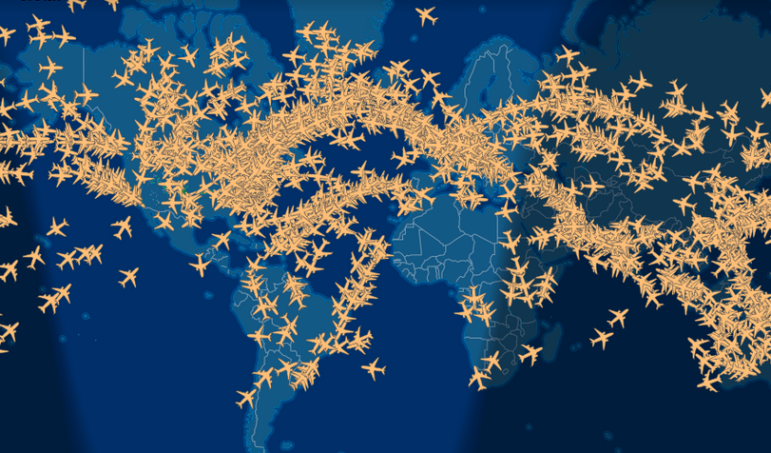

A snapshot of worldwide plane movements on May 23, 2019 using the tracking site FlightAware. (Screenshot.)
How to Track Aircraft Around the World: A New GIJN Reporting Guide

A snapshot of plane movements on May 23, 2019 using the tracking site FlightAware. Screenshot: FlightAware
Tracking aircraft has become an increasingly valuable tool for investigators of corruption, government surveillance, military operations and more.
New technologies have usefully enhanced the precision and scope of tracking systems.
GIJN’s new resource on planespotting provides detailed information on:
• How tracking works and why one new disruptive technology is democratizing information.
• What tracking system websites to use to track planes, and whom to contact for assistance.
• How to identify aircraft owners.
• Techniques for reporting with flight data.
Also see our one-page tipsheet of sites to visit.
Want to meet the experts in person? We’ll be featuring planespotting in a panel at the Global Investigative Journalism Conference this September in Hamburg. The session will show you how to track ships and boats around the world as well as aircraft.









